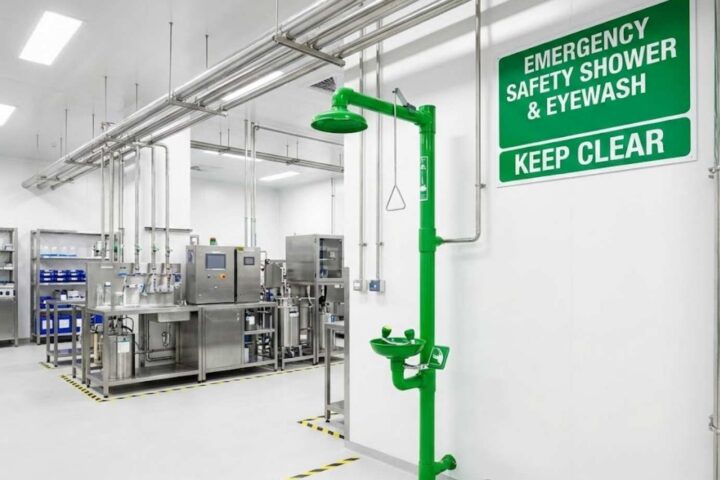Manufacturers nowadays become more accessible and seen with tremendous growth, thanks to the e-commerce site route of becoming a small business.
However, intense global competition and increasing cost pressures put quality at risk among manufacturers. Remember that quality is one of the critical areas that businesses must address to better success chances.
Do you belong to the manufacturing niche? Do you want to know how you can survive it despite the economy taking a bad turn? If so, keep reading and discover the survival tips for manufacturers below:
Tip 1: Maintain Focus
About a decade ago, most manufacturers ended up moving in too many directions at once. When the crisis occurred from 2008 to 2009, they were in poor shape. However, the smart ones utilized investment money and loans wisely to build and develop core businesses. In return, they became the strongest as they emerged from the downturn. So, manufacturers must decide what company type they are and stick with it.
Tip 2: Pay Attention to Supply Chain
Manufacturers must be aware of the risks that may threaten their suppliers. That way, they can prevent the suppliers from a sudden disappearance. They must think of the costs and headaches involved once they replace them on a short notice.
Suppose the manufacturers focus on development, research, and quality in addition to the component’s price or consider the global cost footprint during the sourcing process. In that case, the manufacturers have to pay more in the end. Feel free to use business automation tools, like ERP for manufacturing
Tip 3: Reinvent Products Regularly
If the manufacturers differentiate their products sharply, it means they fare best. Their mindset is to invest in new technologies to improve their chances of success. In other words, out-of-the-box thinking and a little creativity can go a long way.
Tip 4: Improve Quality
Unfortunately, there are still a significant number of manufacturers that deliver components with high defect rates. Manufacturers must realize that whittling them down helps gain a competitive edge. Plus, companies must develop detailed action plans to enhance the components’ quality.
Improving the first-time through rates is also critical to reduce rework and scrap. While 90% of first-time through-rates are common, it is still unacceptable. Instead, companies have to get something made correctly for the first time. In return, they can reduce the costs while increasing their productivity.
Through the root-cause analyses, sources of the problems are identified. It is even less costly than paying for repairs or ongoing defects. It is also doable to improve the 90% first-time through-rate to 97%.
Tip 5: Maximize the Productivity Level and Increase Speed through Enhanced Process Design and Product
Lean manufacturing usually pays attention to production and associated expenses from the conception of components. The product design and manufacturing team should work closely and communicate from the outset.
Having production-friendly components can hold down production time and labor costs. Manufacturers must apply effective techniques and gather design ideas through crowdsourcing to compress the production time. Beware that immense pressure is expected when ramping up the production without lean manufacturing and sending laborers high to help solve this issue as the economy improves.
Tip 6: Consider Globalization
Diversification, consolidations, and acquisitions help manufacturers obtain economies of scale. They prove that it is challenging to compete with other firms without them. Competition tends to be a cutthroat for most components, including the highly sophisticated ones, due to overcapacity rampant in most industries.
However, if manufacturers learn how to consolidate, they can achieve the essential mass to succeed.
Tip 7: Embrace Customer Base Diversification
Diversifying the customer base may involve industry segmentation or go outside it. Many top manufacturers in the auto industry became successful at entering new markets over the last decade.
Many manufacturers have also succeeded in diversifying outside the auto industry. For instance, a specific product may have applications in aviation, heavy equipment, or military vehicles. In other words, manufacturers must pursue a product line within their core competency.
Tip 8: Facilitate the Total Productive Maintenance
This concept has already been around for several decades; the sad truth is that some manufacturers still do not train machine operators to perform various everyday tasks of fault-finding and maintenance.
If these operators understand the machinery and determine possible issues, correcting them before affecting the production is a lot easier. Then, it results in reduced production costs and downtime.
Tip 9: Invest in the Employees
If companies make more significant investments in equipment and training and pay higher wages, they achieve a better downturn than those who did not. They can also experience fewer sales losses than the companies that were least inclined to it. This means employee empowerment is advantageous.
Tip 10: Offshoring or Onshoring
Manufacturers must determine the total product costs. Employees may need to inspect the shipping container filled with components piece by piece to know which one is scraped or requires repair because of poor quality.
When identifying the total product cost, logistics is another issue that manufacturers must address. For example, long voyages from Asian countries tend to wreak havoc on the so-called “just-in-time” delivery. That is because they need parts inventories maintenance instead of securing them into the production.
Newer, complementary software tools that can compare the manufacturing parts and tools costs and manufacturers can utilize them to figure out the total ownership costs.
Tip 11: Have Customer Engagement
Any business, particularly the manufacturers, highly prioritizes effective marketing strategies. When consumers perform a research, they often notice several factors like website, social media, brand strength, and market presence.
Manufacturers must learn how to use SEO effectively to improve their customer engagement and website visibility. It also enables the customers to interact with them and feel that they are valued.
Final Thoughts
With the above survival tips for manufacturers, we hope you can improve your manufacturing approach and achieve your goals. Do not rush; it is best to take baby steps. Ensure to use the right technology and determine which tips are more beneficial for your business growth. Plus, do not lose hope if things do not work according to your plan because you can always try another route.








